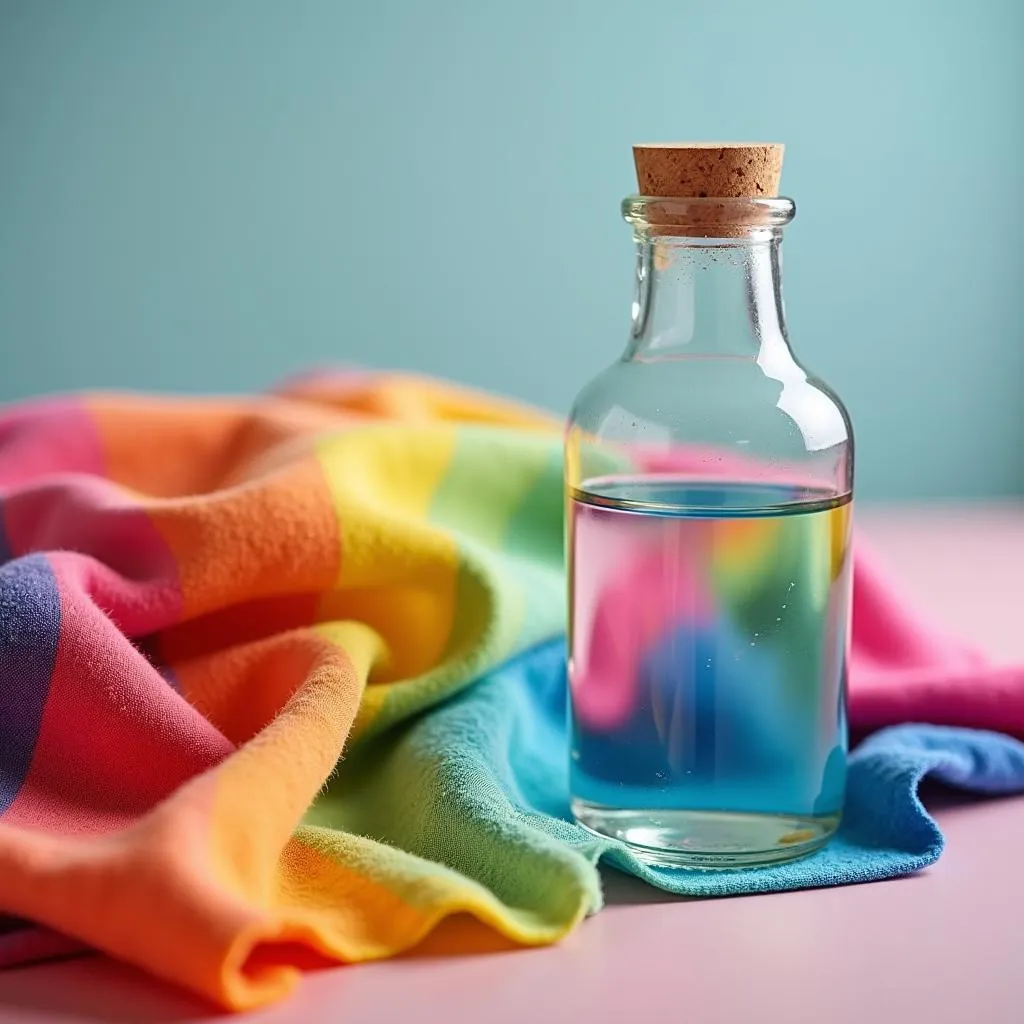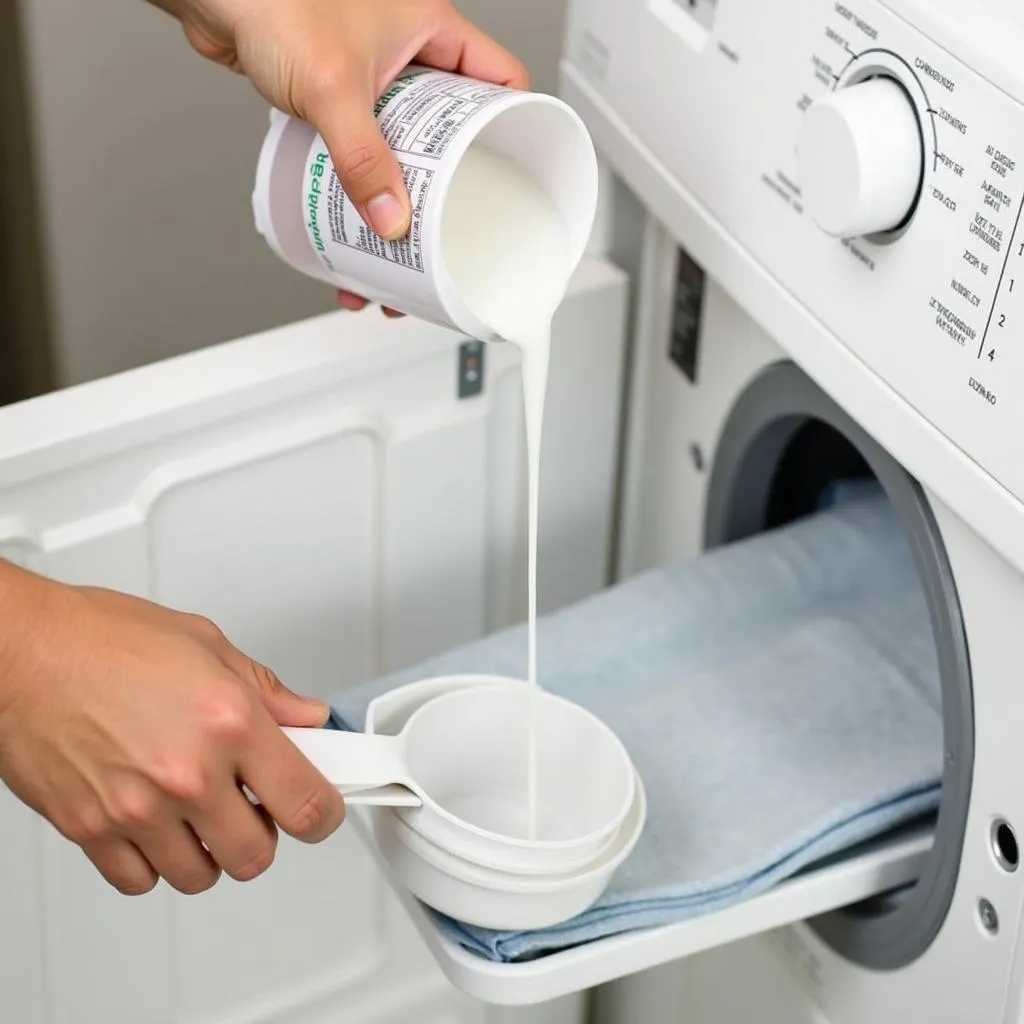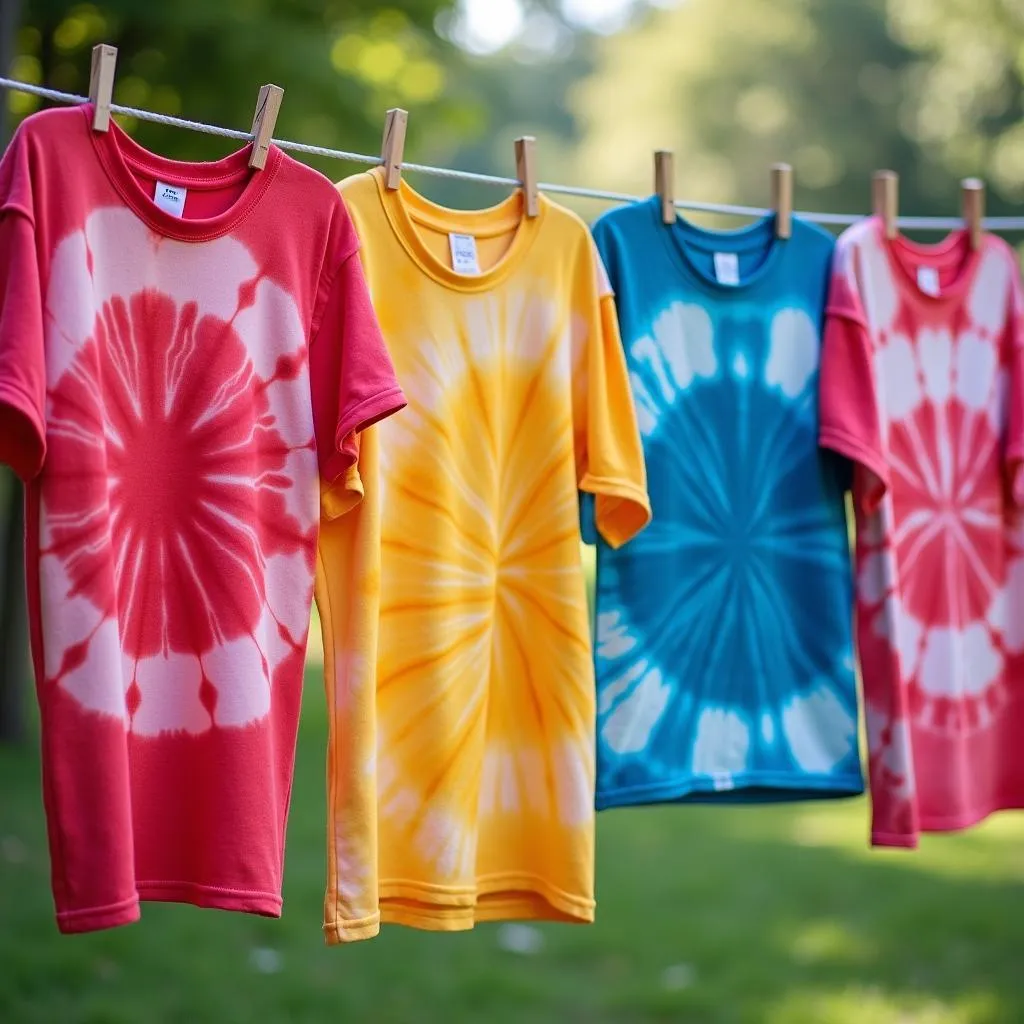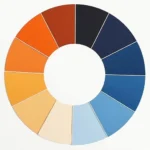Have you ever experienced the frustration of colors bleeding together during a painting project? Maybe you’ve seen a brand new red shirt turn your whites pink in the wash. Fear not, because we’ve got a simple, natural solution for you: vinegar! That’s right, this common household ingredient is a secret weapon when it comes to preventing color bleeding.
The Science Behind Color Bleeding and Vinegar’s Magic
Before we delve into the “how-to,” let’s quickly understand why color bleeding happens. Dyes, especially in newer fabrics and paints, can sometimes be unstable. When exposed to water, heat, or even other colors, these dyes can start to leach out, leading to unwanted color transfers.
So, where does vinegar come in? Vinegar, with its mild acetic acid, acts as a fixative. It helps to set the dye, making it less likely to bleed. Think of it as giving those loose dye molecules a little “hug” to keep them in place.
 Vinegar and Fabric
Vinegar and Fabric
Practical Ways to Use Vinegar to Prevent Color Bleeding
Vinegar is surprisingly versatile. Here are a few methods you can use depending on what you want to protect:
1. Pre-Wash Treatment for Fabrics
- For New Clothes: Before you toss that newly purchased red shirt into the wash, soak it in a solution of cold water and white vinegar. Use a ratio of 1 cup of vinegar to 1 gallon of water. Soak for about 30 minutes to an hour, then wash as usual. This is particularly helpful for darker or brightly colored fabrics.
- For Delicates: If you’re worried about a delicate garment, turn it inside out and place it in a basin or sink. Fill the basin with cool water and add about 1/2 cup of white vinegar. Let it soak for 15-20 minutes, then rinse thoroughly and air dry.
2. Adding Vinegar to the Wash Cycle
This is a simple yet effective method:
- For Regular Loads: Add 1/2 cup to 1 cup of white vinegar to your washing machine’s fabric softener dispenser. Wash your clothes on a cold water setting as usual.
3. Spot Treating Stains
- For Fresh Stains: If you notice a color bleed stain, act quickly! Blot the stain immediately with a clean cloth to absorb excess moisture. Then, mix equal parts white vinegar and water and gently dab the solution onto the stain. Let it sit for a few minutes before rinsing and washing the item as usual.
 Vinegar in Washing Machine
Vinegar in Washing Machine
Does Vinegar Work on All Colors and Fabrics?
While vinegar is a great natural solution, it’s always best to err on the side of caution. Here are a few things to keep in mind:
- Test First: Before using vinegar on any garment, especially delicate fabrics, do a spot test on an inconspicuous area. Apply a small amount of diluted vinegar solution, let it dry, and check for any discoloration.
- Colored Vinegar: While white vinegar is generally safe for colors, avoid using colored vinegar, as it could potentially stain your clothes.
Beyond Laundry: Vinegar for Art and Crafts
The color-fixing properties of vinegar extend beyond laundry. Artists and crafters have long used vinegar in various ways:
- Watercolor Painting: Adding a small amount of vinegar to watercolor paints can help to prevent colors from bleeding into each other, creating sharper edges and more defined shapes.
- Tie-Dye Projects: Soaking tie-dyed fabric in a vinegar solution after dyeing helps to set the colors and reduce bleeding, resulting in more vibrant and long-lasting designs.
 Tie-Dye Shirts Drying
Tie-Dye Shirts Drying
Vinegar: A Safe and Effective Solution
Preventing color bleeding doesn’t have to involve harsh chemicals. Vinegar offers a natural, safe, and effective way to protect your clothes and creative projects. By incorporating this household staple into your laundry routine and artistic endeavors, you can say goodbye to the disappointment of color bleeds and hello to vibrant, long-lasting colors.
Remember: Always test a small, hidden area first to ensure the vinegar solution doesn’t negatively affect your fabric or art materials.

